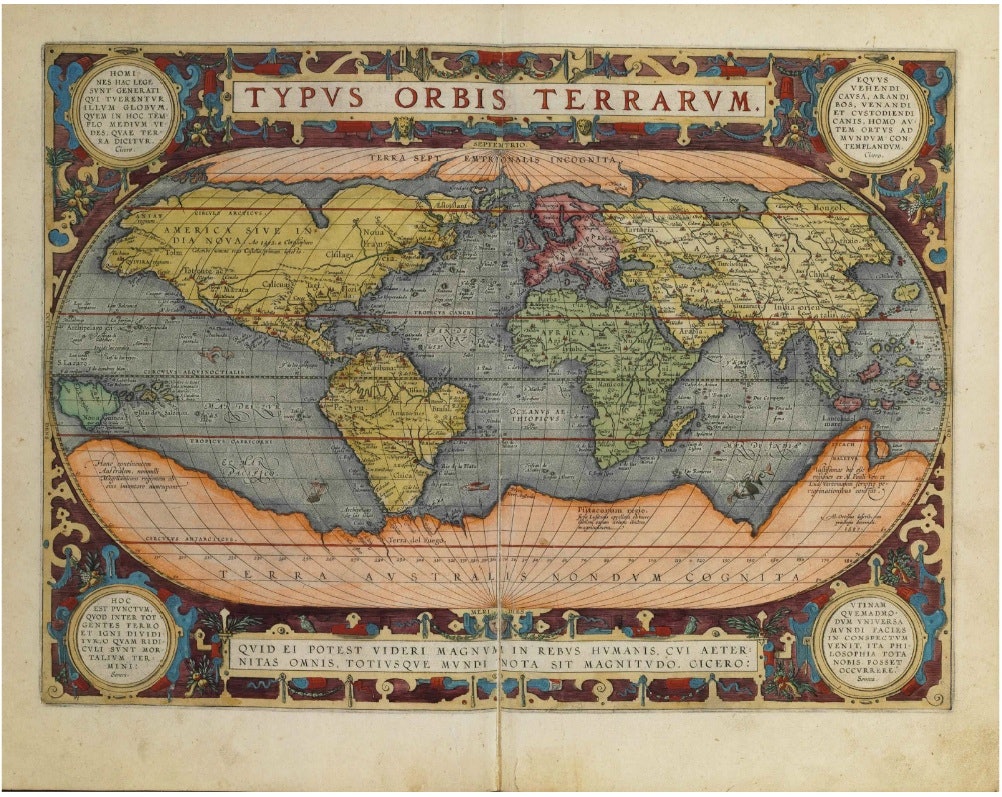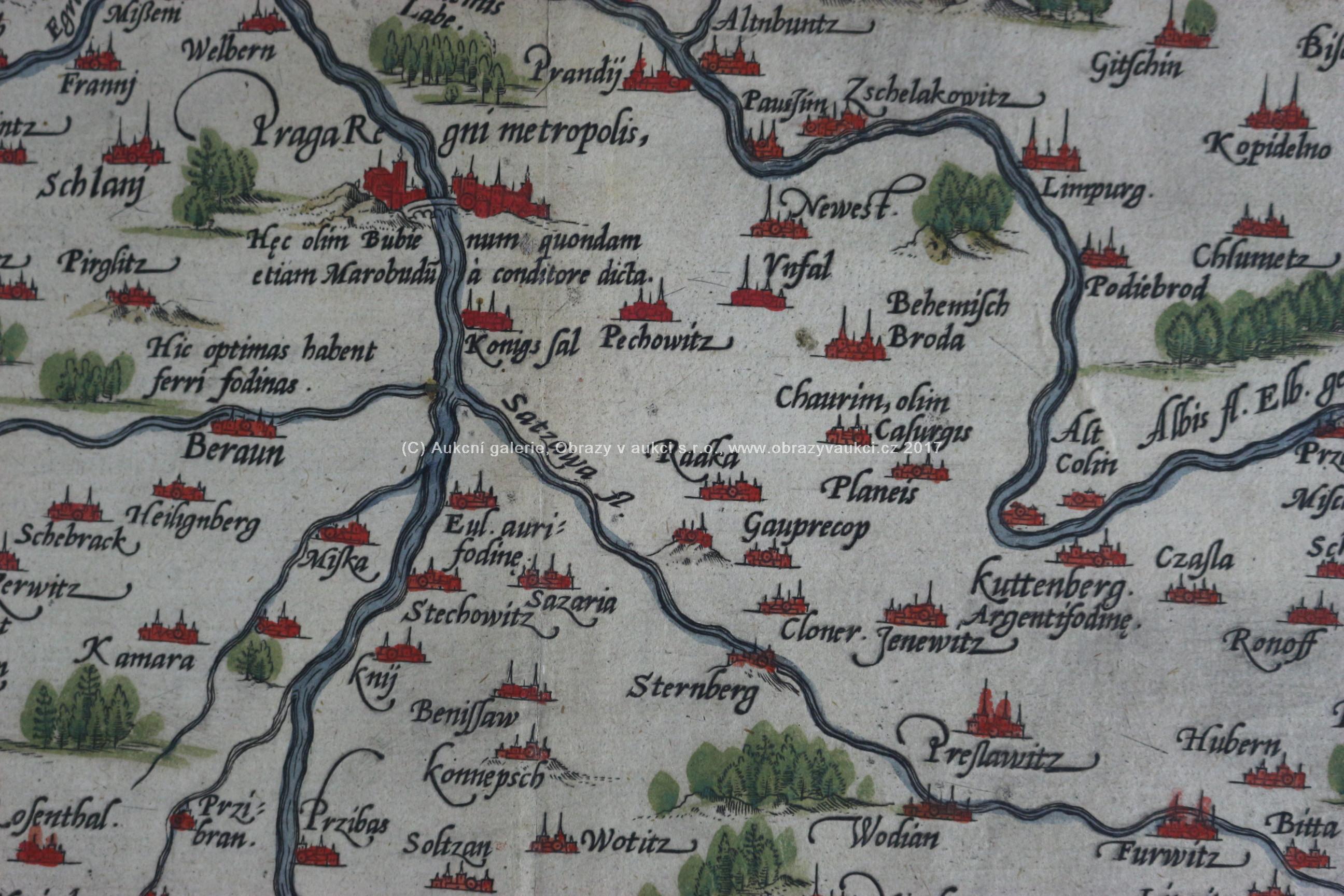

#Mapa ortelius full
Skautuhvalur, this fish altogether full of gristles or bones is somewhat like a ray or skate but an infinite deal bigger: when it appears, it is like an island, and with his fins overturns ships and boats. It cannot follow or chase the smaller fishes, by reason of the huge greatness and weight of his body, yet he preys upon many, which he catches by a natural wile and subtlety which he uses for to get his food. The greatest kind of Whales, which seldom shows it self it is more like a little island, than a fish. It often does the fishermen great hurt and scare.

Hroshualur, that is as much to say as the Sea-horse, with a mane hanging down from his neck like a horse. The English whale, thirty ells long: it hath no teeth, but the tongue of it is seven ells in length. Ziphius, (it may be he means Xiphius, the sword fish) a horrible sea monster, swallowing the black seal at one bite.į. The Hyena, the sea hog, a monstrous kind of fish, of which thou mayest read in the 21st book of Olaus Magnus.Į. It hath many very strong teeth, whereof they make Chessmen or Tablemen. The Burchvalur, hath his head bigger than all the body beside. The fat of it is good against many diseases.Ĭ. The flesh of it is very good meat, wholesome and toothsome. The Roider, a fish of a hundred and thirty ells in length, which hath no teeth. It is thought to be a good antidote and sovereign medicine against poison. This, divers have sold for the Unicorn’s horn. It hath a tooth in the forepart of his head, standing out seven cubits. If any man eat of this fish, he dies presently. Is a fish which they commonly call Nahual. The following is the map key from the version that was originally published in English (with some archaic spellings changed here for readability) which describes the marine life:Ī. Most of the sea monster pictures can be traced originally to the artist Olaus Magnus, though the immediate source for Ortelius was more likely Sebastian Münster, who adopted many of Magnus’s pictures in engravings in his Cosmographia ( 1488–1552). This text is probably derived from Icelandic tales and superstitions. The National Library and University Library of Iceland has various versions of Ortelius’s Islandia map in its collection, and have transcribed the text on the backside for its website (see References below). According to scholar Marcel van den Broecke in his illustrated guide to Ortelius atlas maps, this indicates that this map is from the 1608 or 1612 Italian edition of Theatrum Orbis Terrarum. The backside of the offered Iceland map has printed Italian text and is numbered 115, as issued. Ortelius’ Theatrum Orbis Terrarum was issued in various languages. Nonetheless, in Ortelius’ map the proportions of Iceland overall are not accurate and Iceland’s largest glacier in the then-unexplored center of the country is not shown. The Ortelius version depicts known settlements in Iceland to date it has 250 places that are labeled - in many cases given a Danish form of name - possibly derived from Thorláksson’s map. Instead, the scholarly consensus is that the map’s geographical content is based on a 1606 Iceland map that no longer exists by native Icelander, Gudbrandur Thorláksson, Bishop of Hólar. Nonetheless, historians have long dismissed the possibility that Ortelius actually designed the map, although the historical text on the back of the map is derived from his work. Ortelius’ Islandia is dedicated to Frederick II of Denmark by Andreas Velleius (Andreas Sørenson Vedel), a Danish historian of the period from whom Ortelius may have received the map. Additional decorative flourishes include an elaborate Mannerist strapwork cartouche with distance scale and birds perched on either side, driftwood in the waters, and mountain ranges indicated by pictorial shaded renderings. The map also has lively depictions of polar bears on icebergs, a spouting whale and sailing ships in the ocean, and Mount Hekla volcano erupting. The sea creatures are labeled according to a lettered key and described verso (see transcription of the key below). 1590-1612Ī map of Iceland by Abraham Ortelius, one of the great cartographers from the Golden Age of Dutch map making, and the first to produce a “modern atlas.” It incorporates images of strange sea creatures teeming the surrounding waters - a mixture of actual marine life and legendary ones that were believed to exist at the time - making it one of the most sought after Ortelius maps by collectors.


 0 kommentar(er)
0 kommentar(er)
